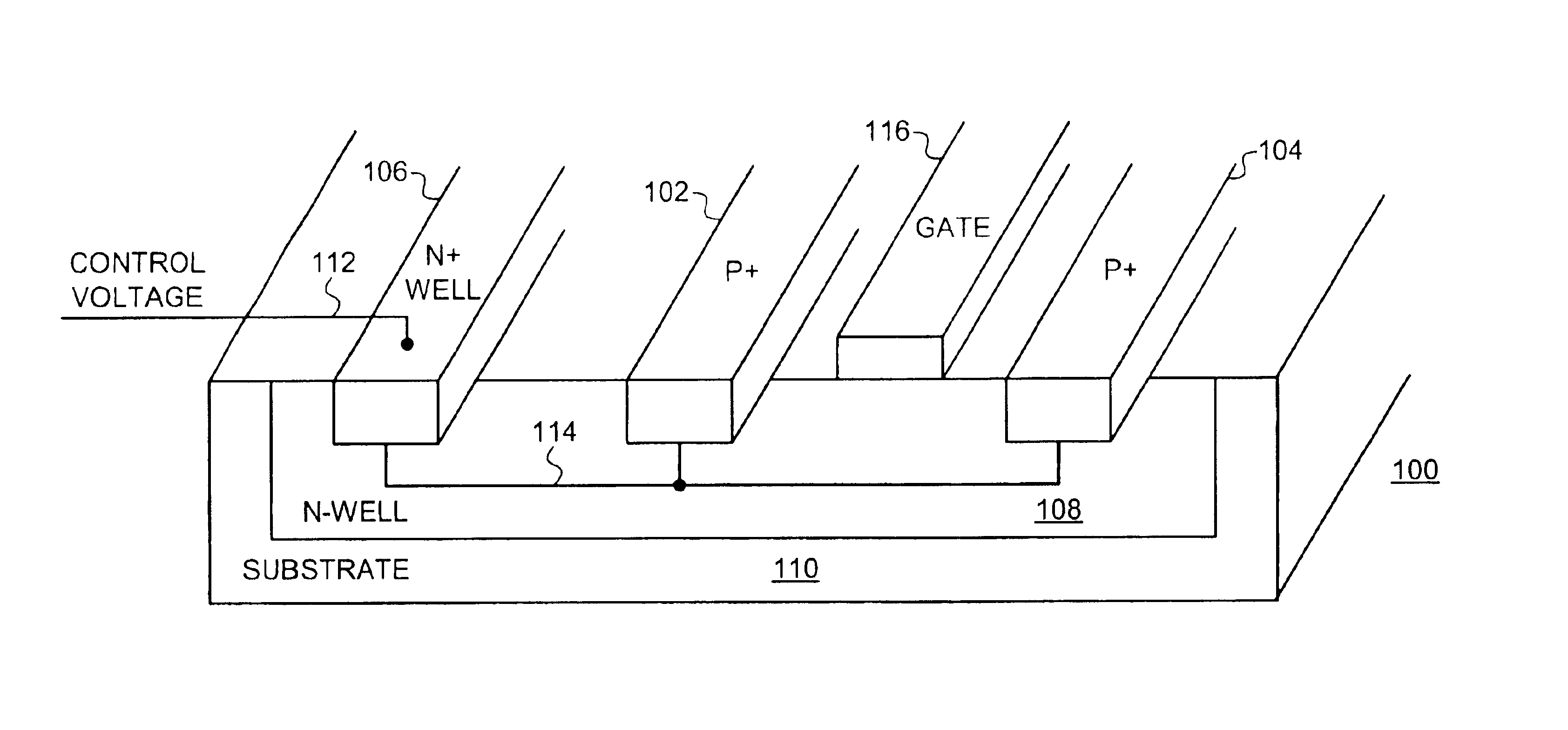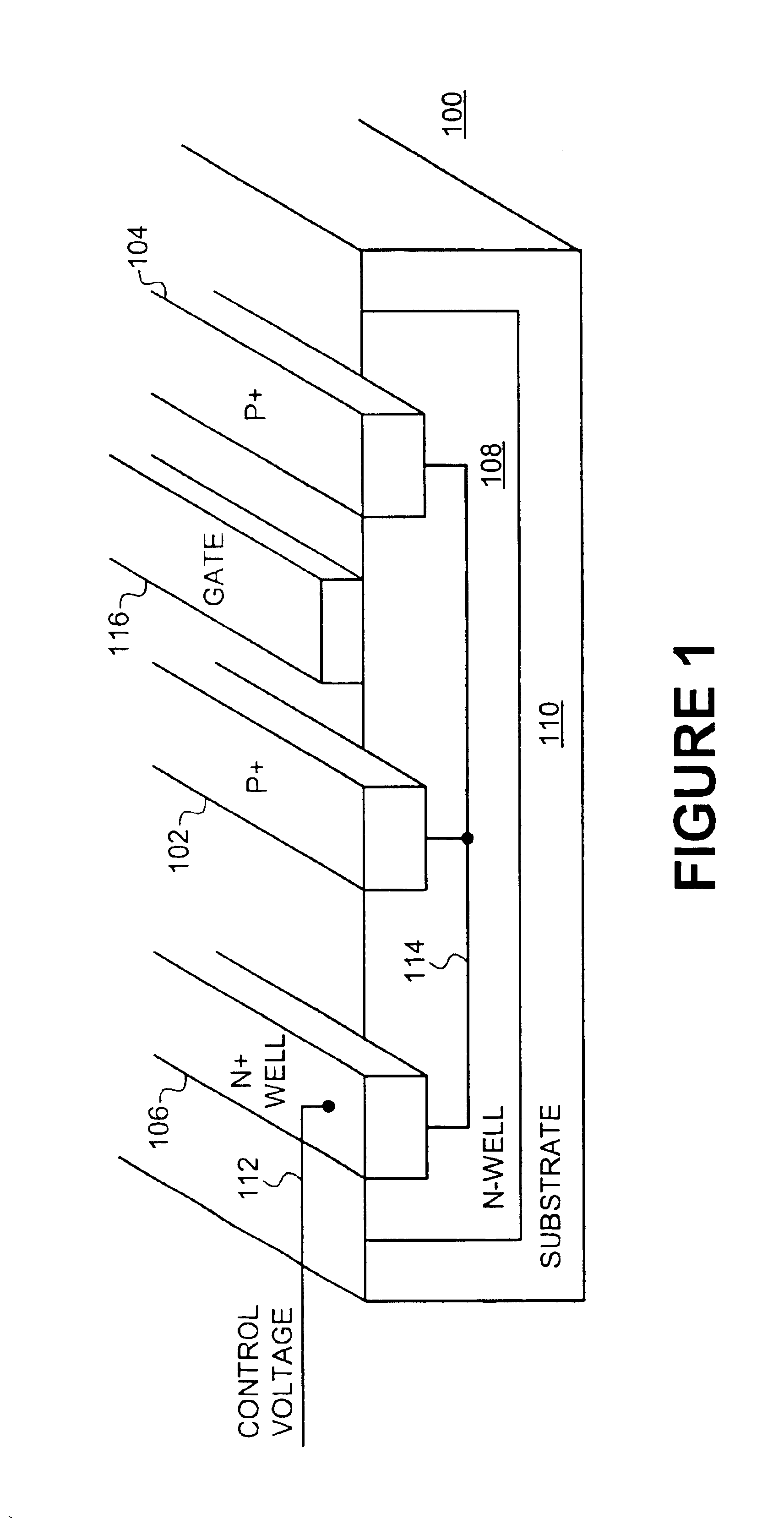Physically defined varactor in a CMOS process
a technology of cmos and varactor, applied in the field of integrated circuits, can solve the problems of reducing jitter performance, unable to achieve demand standards, and prior art cmos voltage controlled capacitors do not have comparable qs,
- Summary
- Abstract
- Description
- Claims
- Application Information
AI Technical Summary
Benefits of technology
Problems solved by technology
Method used
Image
Examples
Embodiment Construction
A CMOS varactor according to embodiments of the present invention is described herein. In the following description, numerous specific details, such as particular processes, materials, devices, and so forth, are presented to provide a thorough understanding of embodiments of the invention. One skilled in the relevant art will recognize, however, that the invention can be practiced without one or more of the specific details, or with other methods, components, etc. In other instances, well-known structures or operations are not shown or described in detail to avoid obscuring various embodiments of the invention.
Some parts of the description will be presented using terms such as transceiver, phase-locked loop, substrate, resistance, capacitance, jitter, and so forth. These terms are commonly employed by those skilled in the art to convey the substance of their work to others skilled in the art.
Other parts of the description will be presented in terms of operations performed by a compu...
PUM
 Login to View More
Login to View More Abstract
Description
Claims
Application Information
 Login to View More
Login to View More - R&D
- Intellectual Property
- Life Sciences
- Materials
- Tech Scout
- Unparalleled Data Quality
- Higher Quality Content
- 60% Fewer Hallucinations
Browse by: Latest US Patents, China's latest patents, Technical Efficacy Thesaurus, Application Domain, Technology Topic, Popular Technical Reports.
© 2025 PatSnap. All rights reserved.Legal|Privacy policy|Modern Slavery Act Transparency Statement|Sitemap|About US| Contact US: help@patsnap.com



